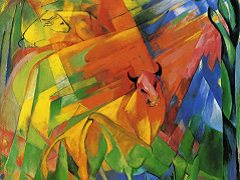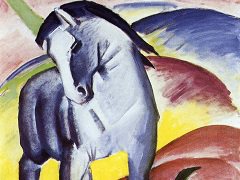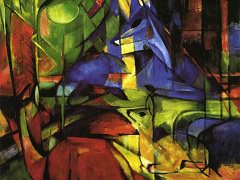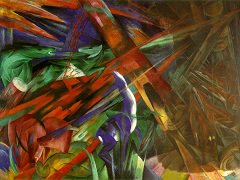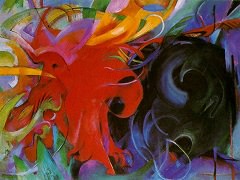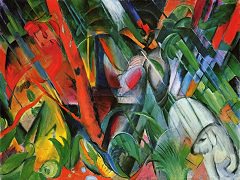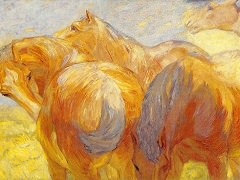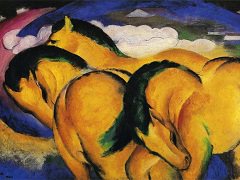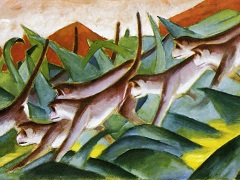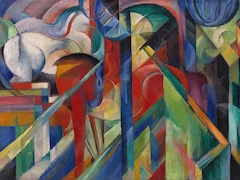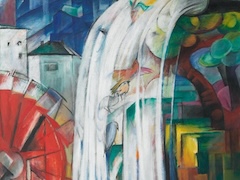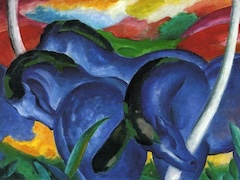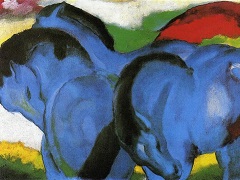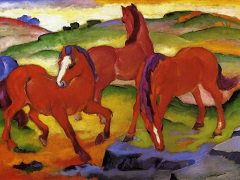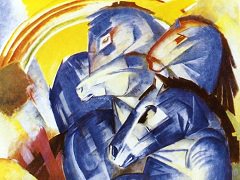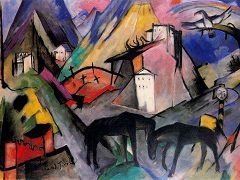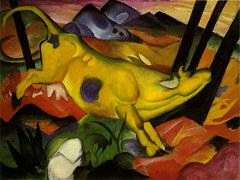Tiger by Franz Marc

The furious activity of late 1911 and early 1912 had a considerable effect on Marc's work. In style, his paintings of 1912 clearly show the influence of the two Blaue Reiter exhibitions as well as the Futurist show which the artist saw at the Sturm Gallery in Berlin in April. In content, these works demonstrate a new and disturbing sense of restlessness, of tension, of imminence and anticipation. These qualities are evidenced in the painting Tiger, painted in March of 1912.
In the midst of a landscape composed almost entirely of cubic forms rendered in bright luminous tones of red, green, violet, and orange, the animal of the title, a beast of tremendous power and size, is seen perched upon a rock. This
is not, by any means, the kind of dreamy, transcendent image that we saw in Blue Horse I or Yellow Cow, but rather the picture of a killer. Disturbed from its sleep, its head
risen, its stark yellow eyes fixed upon its intended victim, this tiger, composed solely in tones of yellow and black, is ready to discharge the kinetic force of its massive and muscular bulk. The images of this animal is made to seem
even more powerful by the block-like construction of the forms that determine its body. The entire works is filled with tension, with a sense of apprehension, with a presentiment of quick and sudden death. In this painting the feeling
of security, of harmony and comfort that Marc had projected in his previous works is now entirely absent. The Tiger is not by any means an isolated image. Even in a seemingly innocent works like Two Cats, Blue and Yellow,
painted later that year, the same sense of aggression, of imminence, is repeated, albeit on a less ominous scale.
Marc's Tiger shows obvious debt to Picasso's cubism and Paul Cezanne. Cubism is used as a means of heightening realism and sentiment, the cubist
influence is even stronger in his another painting Deer in the Forest.

